Hair Glasses by Studio Swine
by: Dezeen, 2011-06-27 13:59:27 UTC
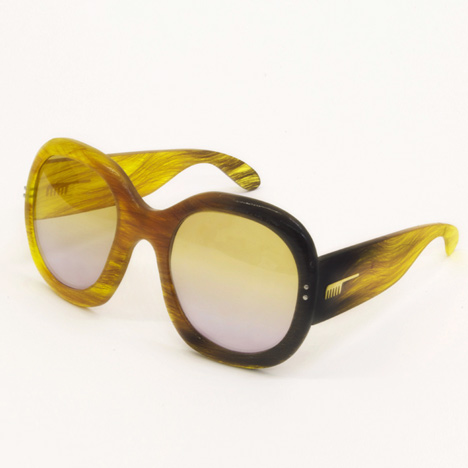
Royal College of Art graduates Azusa Murakami and Alexander Groves have made a collection of spectacles from human hair. (more…)


 Formica Laminates Switch To FSC Certified Paper
Formica Laminates Switch To FSC Certified Paper
by: TreeHugger Design, 2011-06-27 14:34:19 UTC

Image credit Formica
Fifty years ago, just about every kitchen counter was plastic laminate. It made sense; the stuff as cheap, easy to work with, relatively durable (my mother-in-law has been using the same counter for 45 years) and there were not a lot of alternatives. Then Corian came along in the seventies, and granite got globalized, and plastic laminate came to be considered downmarket.
But it is an interesting product, really just paper laminated under pressure together with phenolic resin. Those resins used to be made with formaldehyde, but now are usually water based. Now the
Read the full story on TreeHugger
Medical Emergency Necklace
by: Yanko Design, 2011-06-27 07:01:23 UTC
The Talk mobile communications concept is a response to reduced government spending on healthcare for elderly populations, an epidemic that effects not only millions of seniors but the family and friends of those who are vulnerable and living alone. The easy to use pendant can be customized to call up to 3 designated numbers, assuring that loved ones have access to 24 hour support at the push of a button.
Designer: Tom Harries
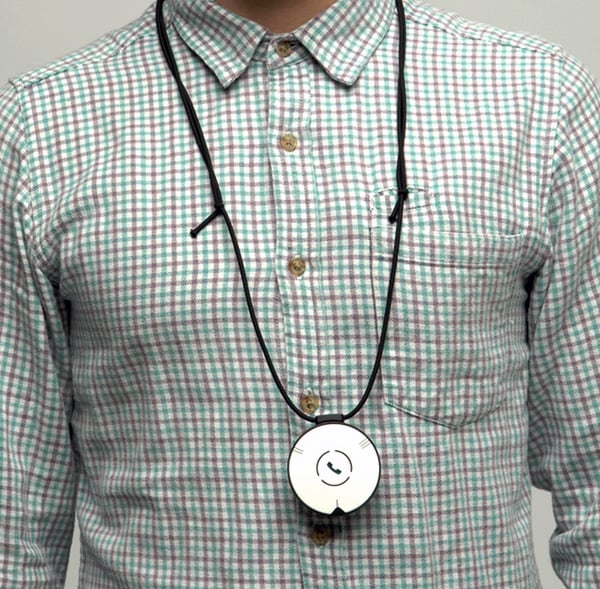
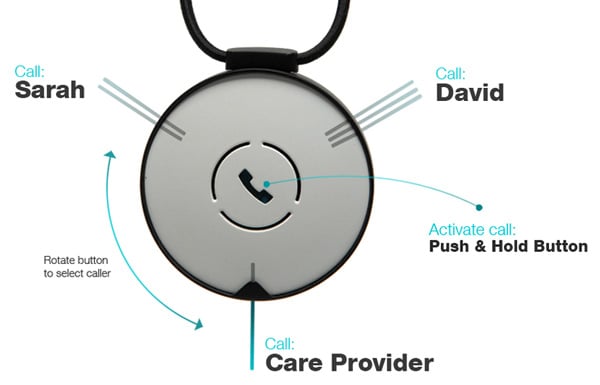
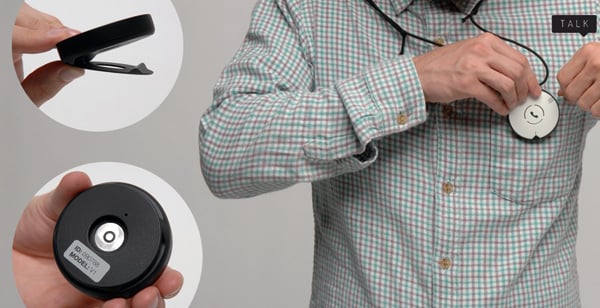
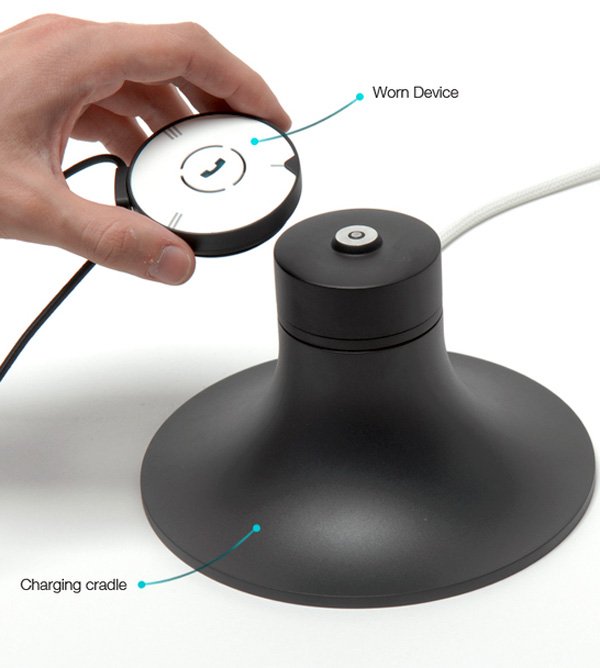
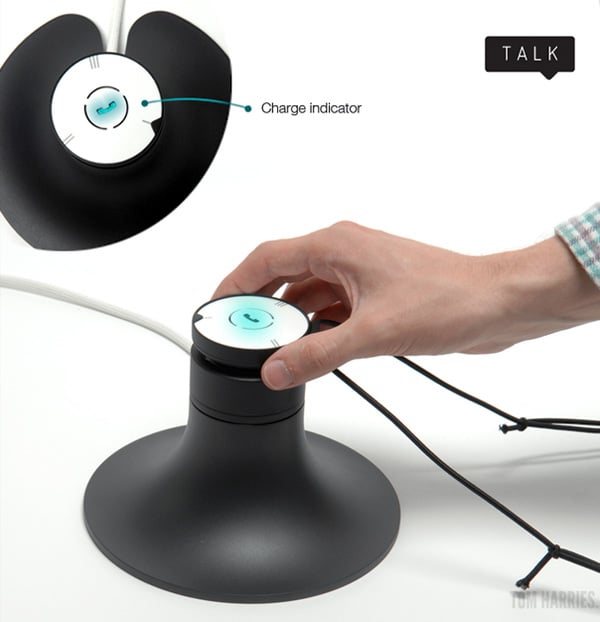
----------
Yanko Design
Timeless Designs - Explore wonderful concepts from around the world!
Yanko Design Store - We are about more than just concepts. See what's hot at the YD Store!
California gets carbon market court win
by: Reuters: Green Business News, 2011-06-26 01:07:56 UTC
SAN FRANCISCO (Reuters) - A California appellate court has ruled that state regulators can proceed with plans to implement a carbon cap-and-trade system, a decision that puts them on track to launch...
 Germany scraps plan to cut wind industry
Germany scraps plan to cut wind industry
by: Reuters: Green Business News, 2011-06-24 10:18:41 UTC
BERLIN (Reuters) - Germany will not cut the wind industry's subsidies as fast as planned, government sources said, in a move aimed at encouraging investment in that form of renewable energy.
 New process allows fuel cells to run on coal
New process allows fuel cells to run on coal
by: Gizmag Emerging Technology Magazine, 2011-06-24 03:06:54 UTC

Lately we’re hearing a lot about the green energy potential of fuel cells, particularly hydrogen fuel cells. Unfortunately, although various methods of
hydrogen production are being developed, it still isn’t as inexpensive or easily obtainable as fossil fuels such as coal. Scientists from the Georgia Institute of Technology, however, have recently taken a step towards combining the eco-friendliness of fuel cell technology with the practicality of fossil fuels – they’ve created a fuel cell that runs on coal gas.
..
Continue Reading
New process allows fuel cells to run on coalTags: Coal,
Eco-friendly,
Fuel Cell,
Georgia Tech
Related Articles:


 Ultrasensitive underwater microphone inspired by orca ears
Ultrasensitive underwater microphone inspired by orca ears
by: Gizmag Emerging Technology Magazine, 2011-06-24 17:46:19 UTC

Given how poorly light and radio signals are able to travel underwater, sound is still the best medium for wireless undersea communications. Conventional underwater microphones – or hydrophones – have their limitations, however. One of their main problems is that the deeper they go, the less sensitive they become. Scientists from California’s Stanford University have now found a solution to that problem, in the form of a hydrophone that is designed to perform like an orca’s ear...
Continue Reading
Ultrasensitive underwater microphone inspired by orca earsTags: Biomimicry,
Microphone,
Sound,
Stanford University,
Underwater
Related Articles:


 Future Perfect: Using Biomimicry to create sustainable products
Future Perfect: Using Biomimicry to create sustainable products
by: Ecofriend, 2011-06-25 10:44:11 UTC
Adrija Bose:

BiomimicryBiomimicry is a practical methodology to solve problems by looking to nature
What’s happening right now
Biomimicry is a way of studying nature and applying it to solve the problems of mankind. It is a practical approach designed and inspired by nature. With the ever increasing population of the world and the demand for natural resources growing while supplies being constant, environmentalists all over the world are trying to come up with innovative solutions to help the environment, companies, and most of all–consumers. With about 7 million humans on earth, scientists are realizing that a sustainable world can be created only with the help of nature.
Animals, plants, and microbes are the world’s greatest engineers. They have solved many of the problems that humans face today. One such solution to retain the environment is Lotusan, an innovative, environmentally-friendly and energy-saving paint, created by paint manufacturers using the concept of microscopic structure of the lotus. Buildings that are painted with Lotusan has the ability to clean themselves during rain. This article throws light on the developments in biomimicry in different areas.
Trends
1. MIT scientists successful in creating a stable artificial leaf

Artificial leafUse of Bio-mimicry to create sustainable products
A high revolutionary advancement in the field of chemistry has been researched and conceptualized at MIT’s Nocera Lab, led by Dr. Daniel Nocera. The leaf is composed of electronic components, silicon, and low-cost catalysts such as nickel, for enhancing reactions. The leaf can utilize sunlight for photosynthesis and break water into hydrogen and oxygen. The hydrogen released in the reaction can be used to produce electricity.
World’s very first balanced artificial leaf, is not to decorate homes but is an innovative idea to address the issue of core function of creating clean energy. The research is cost-effective yet green and effective. This special artificial leaf can act as a source of inexpensive electricity, especially for small appliances. All that you require would be water and sunlight. In the present scenario, this artificial leaf can act as an inexpensive and compact source of electricity, specifically for small appliances. The requirements are just a gallon of water and sunlight.
2. Mercedes-Benz Bionic Car

Mercedes-Benz bionic carUse of Bio-mimicry to create sustainable products
A new concept vehicle has been used by Daimler Chrysler by examining the potential of bionics for automobile development. Combining pioneering diesel engine technology and innovative emission control methods, outstanding results has been achieved with fuel consumption and emissions.
To realize the Mercedes-Benz bionic car, the engineers at the Mercedes-Benz Technology Centre and the DaimlerChrysler Research department have looked for a specific example in nature which creates an aerodynamic, safe, comfortable and environmentally compatible car. Boxfish was the specific example in nature that helped in creating the bionic. Despite its boxy, cube-shaped body, Boxfish, a tropical fish is outstandingly streamlined representing an ideal aerodynamic. Besides the aerodynamics and a lightweight concept derived from nature, the innovative SCR technology greatly contribute to fuel economy.
3. Nissan Solar Tree Concept

Nissan Solar TreeUse of Bio-mimicry to create sustainable products
The Nissan Solar Tree is a concept that is part of the larger 2030 zero-emission city. Apart from Nissan, many major industrial companies in Japan are participating in it. Based on the green aspirations, the idea hopes to create the next-generation city design. The solar tree which is about 12 meters in height is fitted with 3 translucent solar panels. It could be deployed locally within the city, or in a forest along highways and other more remote areas. The Solar Tree is capable of providing energy to 7000 homes. The nature mimicking concept, if turned to reality, can completely eradicate the problem of electricity.
4. NOMFET organic transistor that mimics a brain synapse

NOMFETUse of Bio-mimicry to create sustainable products
Nanotechnologies may aid scientists to create computers that can stimulate and emulate the brain’s abilities of sensation, perception, interaction, and cognition. Nanotechnology researchers in France have developed a hybrid nanoparticle-organic transistor that can mimic the main functionalities of a synapse.
The potential application of this work is to increase the performance of neural-network computing circuits. Since nano particles and molecules are nanosize objects suitable for nanodevice fabrication, they can be easily assembled in a low-cost technique. Hybrid nanoparticle-organic transistor of Vuillaume might be advantageous if we connect artificial neuromorphic devices and circuits (based on the NOMEFT) with soft biological materials. However, even if this work reduces the number of electronic devices required to mimic a biological synapse, the high level of synapse-neuron connectivity in the brain requires the development of artificial neural networks computing circuits in 3D.
5. COM-BAT

COM-BATCOM-BAT makes for a robotic surveillance wonder
New platforms are being researched, especially which mimic the nature to improve surveillance options. This robotic spy plane, although just six inches long can be used as a power source and used for monitoring all sensory perceptions in a combat zone. This project is being funded by the US Army, but involves the University of California at Berkeley, the University Of New Mexico, and the University Of Michigan College Of Engineering. The spy plane with the aid of solar power, wind power and even vibration-sourced power can record images; audio and even smells of a combat area, transmitting them over radio signals.
6. Corona Solar Lights

Corona Solar LightsGreen sunflower for alfresco illumination
Nature mimicking’s best example would be the Corona Solar Lights. This simple yet nifty device created by Emi Fujita and Shane Kohatsu is an eco-friendly luxurious lighting. Borrowing elements from the dish and sunflower as metaphors, they have combined a photovoltaic cell, LEDs, and floral form to render a beautiful solar-powered glow to your outdoor spaces. You can choose to place it in your garden in the midst of sunflowers, attach it to a wall or even place it in a flower vase. The no-adhesive function allows for easy disassembling and recycling.
Advancements
Biomimetics has grown as complex as living organisms. Each day scientists are tapping into natural environment to produce practical use technologies. For example, scientists have been looking at whale flippers (which have points on the sides, rather than the expected smooth surface) and trying to apply their design to make efficient windmills. Scientists have also engineered a swimsuit that is made up of tiny teeth-like plates, like shark’s dentricles. The dentricle like structure aids the swimmer cut through the water with less friction. Some engineers have studied the beaks of toucans to see how they can be so amazingly light so as not to disrupt flight, but hard enough to crack nuts.
Stanford University scientists have created a robot called Stickybot with footpads covered in nanotubules. The footpads are like a gecko’s foot. A gecko’s feet have around 6.5 million spatula-like hairs on each toe which allow the animal to stick onto and climb vertical surfaces due to Van der Wals attractions (the attractions between minute electrical charges caused by the constantly shifting electrons). Although the created technological bodies are not as fast moving as their original counterparts, scientists are looking for ways to improve it.
The Impact
Over the years Biomimicry is gaining popularity across the globe. Scientists are discovering new technologies to provide design methodologies and techniques to optimize engineering products and systems. San Diego Zoo Global has one of the largest plant and animal collections in the world. With a set of scientific and behavioral experts and world-class facilities to help unlock nature’s secrets and solve real-world problems San Diego Zoo Global has partnered with City of San Diego and other universities to become the world’s first biomimicry hub. The vision of the organization is to connect people to wildlife and conservation. To maximize the use of Biomimicry, scientists and researchers are working together to improve it.
Parker, a researcher at the Natural History Museum in London and at the University of Sydney, is a leading proponent of biomimetics. His studies on iridescence in butterflies, beetles and antireflective coatings in moth eyes have led to brighter screens for cellular phones. Working with Procter & Gamble and Yves Saint Laurent he makes cosmetics that mimic the natural sheen of diatoms. He also works with the British Ministry of Defense to emulate the natural water-repallant property of ants.
In Berlin, Germany, the fingerlike primary feathers of raptors are inspiring engineers to develop wings that change shape to reduce drag and increase fuel efficiency. Architects in Zimbabwe are studying how termites regulate temperature, humidity, and airflow in their mounds in order to build more comfortable buildings. Japanese medical researchers are reducing the pain of an injection by using hypodermic needles edged with tiny serrations, like those on a mosquito’s proboscis, minimizing nerve stimulation. Scientists all over the world are using the technique of Biomimicry and helping to achieve a sustainable earth.


 The Container of Hope: Designed For People, Not Stuff
The Container of Hope: Designed For People, Not Stuff
by: TreeHugger Design, 2011-06-23 17:48:46 UTC
 Images credit Benjamin Garcia Saxe, used with permission
Images credit Benjamin Garcia Saxe, used with permission
Shipping containers were designed for stuff, not humans, and by the time architects finish adapting them for people there often isn't much left of them. But they are cheap and plentiful, and architect Benjamin Garcia Saxe has managed to adapt a pair of 40' containers so that humans can be very comfortable indeed....
Read the full story on TreeHugger
Eco-pulse: Novel Electricity Monitor
by: EnviroGadget, 2011-06-24 09:00:35 UTC
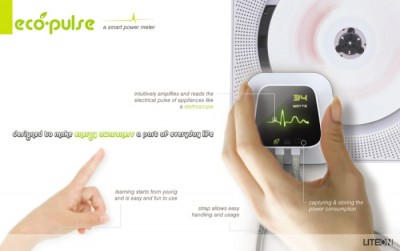
The Eco-pulse is an novel way of keeping track of your electrical usage. The device acts in a similar way to a doctors stethoscope, visualizing the electromagnetic fields of a device into a pulse informing you of the power usage of the item you are ‘listening’ to. The device is a fun way to see the energy usage of each electrical device, even on standby to help make you and your family more energy aware.
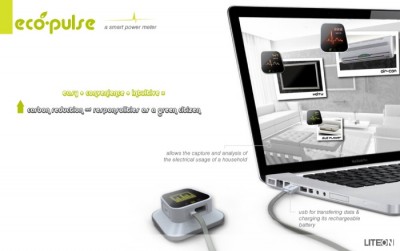
The Eco-pulse has been designed by Wan Xuan Lim and Tang Xueling Jane to provide you with the tools to go searching for hidden power usage. The device has been created to help educate both young and old to the amount of energy that is wasted by standby modes, due to their ‘vampire drain’, it is also an effective way to show just how much energy certain electrical devices use.
Being aware of your energy usage helps you be more proactive in reducing it. Seeing certain devices using a high amount of energy can cause you to purchase more energy efficient models, by seeing the drain of devices left on or on standby you can cultivate better habits at turning them fully off. These simple changes, inspired from awareness of your usage ,can save on your electrical costs and reduce your carbon footprint.
The Eco-pulse can store the data collected and upload it to your computer via its USB cable, it can also use this to charge its internal battery. The device is a novel and fun way to start to get to grips with your home or even office energy use. Easy and quick to use it gets to work straight away allowing you to search out power hungry devices and figure out the best changes for your household.
Source: iGreenSpot
Want to buy this gadget? Check out the Eco-pulse: Novel Electricity Monitor article on EnviroGadget to see the lowest prices for this gadget.
© 2008 to 2011 EnviroGadget.com. You can now keep up with the latest eco-gadgets on the EnviroGadget Facebook page. Why not help us to spread the word?
Related posts:
- Energy Saver Power Monitor By Black & Decker
- Current Cost ENVI Energy Monitor
- Kill-A-Watt Electricity Usage Monitoring Power Strip




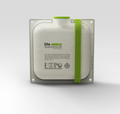

Comments by our Users
Be the first to write a comment for this item.